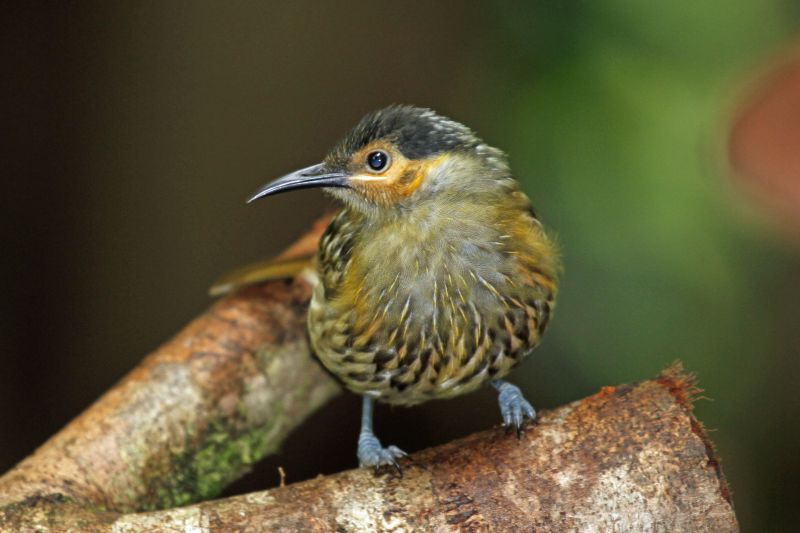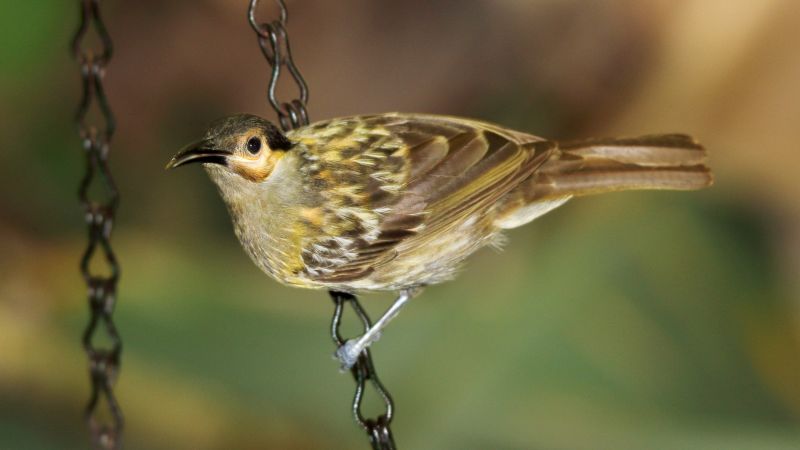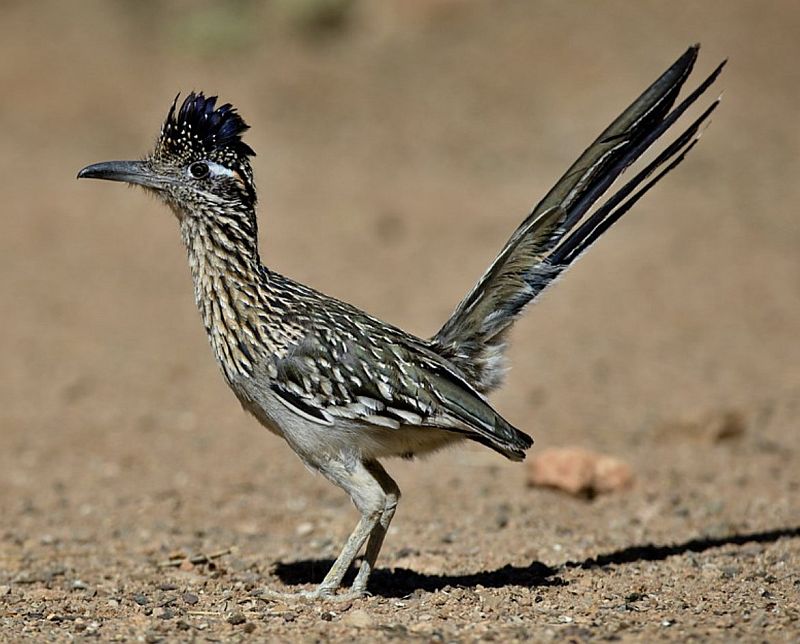Macleay’s Honeyeater (Xanthotis macleayanus) is a quiet and unobtrusive bird compared with other honeyeaters. In northeastern Queensland, they live singly or in pairs in the middle and upper layers of the rainforest canopy, where their deliberate movements and probing for food are similar to riflebirds.
It is also known as Yellow-streaked Honeyeater, Mouleplumaged Honeyeater, and Buff-striped Honeyeater. Macleay’s Honeyeater is about 190-210 mm in length. Macleay’s Honeyeater territorial advertisement, a loud, rapid, strident five-note call, each note upslurred: tchu-wi, tchu-wi-wii. Also, make single chip and cycling whistles.

About 70 percent of the Macleay’s Honeyeater’s diet consists of insects and spiders, 20 percent nectar, and 10 percent fruit. As it searches for insects, it buries its entire front half in the dry vegetation, the rustling of the leaves revealing its presence. It finds most of its insects in dead leaves and vine tangles. As well as catching insects from large leaves of plants such as silver basswood Tieghemopanax murrayi, it hovers commonly to pluck fruit and insects. Moreover, frequently, Macleay’s Honeyeaters visit gardens in search of flowers on umbrella trees, Schefflera, especially because umbrella trees are popular ornamental trees.
Both sexes are similar. Forehead, crown, and nape are brown-black, nape feathers have white shafts; mantle streaked brown and yellow; rump yellow-brown; scapulars brown with cream triangular tips; wing and tail quills brown with yellow-green outer and ochre inner edges. Naked skin around eye yellow-grey; side of head to behind eye black; dark line from bill to yellow-white ear plume. Chin and throat grey, blending into yellow-streaked upper breast; lower breast feathers brown with buff triangular tips; belly grey-yellow. Eyes are brown. Bill is black. Feet are lead-grey. The immature is duller than adults. Also, a slight indication of white nape spots; markings on back less distinct; front of neck and upper breast dull olive-yellow.

Breeding and nesting occur between October and January. Nest a deep cup of plant fiber, dead leaves, bark, leaf skeletons, cobwebs, and cocoons; lined with plant fiber; slung by rim in a horizontal fork, usually fairly high up in canopy but sometimes as low as 2 meters above ground. Macleay’s Honeyeater lays two eggs; smooth, slightly lustrous, pale flesh-buff, dotted and freckled with chestnut, particularly at the larger end where grey markings also occur; oval, about 23 x 17 mm.
As far distribution concerned, Macleay’s Honeyeater is found in north-eastern Queensland, from Cooktown to Townsville, in rain forest but also in mangroves, gardens, and, rarely, nearby eucalyptus forest. Most abundant in lowlands. This is endemic specie with limited distribution. There are no races.
Read More: White-cheeked Honeyeater (Phylidonyris nigra)







